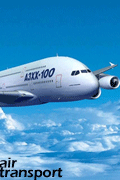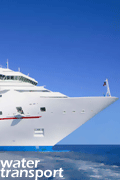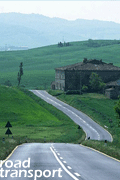Thursday, March 20, 2008
The UK's first motorway car share lane was opened today by Transport Secretary Ruth Kelly, giving drivers a new opportunity to cut both their journey times and carbon footprints.
The 1.7-mile lane, built by the Highways Agency, links the southbound M606 near Bradford to the eastbound M62 towards Leeds. It is open to cars and taxis with two or more occupants, as well as buses and coaches, and bypasses the notoriously congested section where the two motorways merge. The new lane will save road users an average of six to eight minutes per journey - 30-40 minutes per week for regular commuters.
Ruth Kelly said:
"This new lane offers motorists the opportunity to reduce both their journey times and their carbon footprints. Currently, four out of five vehicles using this busy junction have only one occupant. I hope this new lane will encourage people to share their journeys, which will ease congestion, cut journey times and improve local air quality.
"The Government is committed to finding innovative ways to get more from our existing roads and improving journeys for motorists. We have identified around 500 miles of motorway as potential priority sites for new traffic management measures, which may also include more car share lanes."
The lane will allow vehicles on the M606 to bypass congestion at J26 of the M62 and gain priority entry on to the eastbound M62, which is a busy commuter route for motorists driving from Bradford towards Leeds. As the new lane creates extra capacity, other vehicles on the M606 and M62 could also benefit from improved journey times.
It is open to cars, vans and taxis with two or more occupants. Minibuses, coaches and buses can also use the lane and motorcyclists will also be able to use it whether carrying passengers or not.
The project has been funded by the Northern Way economic development partnership who are supporting improvements to the transport infrastructure that will assist economic growth across the north of England.
John Jarvis, Northern Way Transport Project Director, said:
"We are already suffering high levels of congestion on the North's motorways especially around our city regions where the motorways cater for long distance traffic and the needs of our resurgent city economies. If we can encourage greater levels of car sharing through the provision of dedicated lanes at suitable locations it will help lock in the benefits of additional road capacity and be good for the economy and the environment."
The lane can be used by vehicles 24 hours a day, seven days a week, and will be enforced by West Yorkshire Police.
The new lane has been constructed on the hard shoulder of the M606 and M62 eastbound slip road, connected by a short stretch of new carriageway. New lay-by areas have been provided as an emergency refuge facility for broken-down vehicles in place of the hard shoulder.
Notes to Editors
1. Work on the car share lane began in October 2007. The contractor was Balfour Beatty supervised by Carillion WSP. It has been completed on time and on budget.
2. The lane will not be open to HGVs, but the extra capacity means they could benefit from reduced traffic flows in other lanes.
3. The Northern Way brings together the cities and regions of the North of England to work together to improve the sustainable economic development of the North. It is formed as a partnership between the three northern Regional Development Agencies (Yorkshire Forward, Northwest Regional Development Agency and One NorthEast).
4. The Advanced Motorway Signalling and Traffic Management Feasibility study examined the feasibility, costs and benefits of more widespread application of traffic management techniques such as using the hard shoulder as an extra lane during busy periods to cut congestion on the motorway network. Its conclusions were announced by Ruth Kelly on 4th March. Around 500 miles of motorway (800 lane kilometres or 400 route kilometres in both directions) were identified as possible candidates for hard shoulder running schemes. The study also found that the gantries and technology used to implement hard shoulder running could also support various forms of lane reservation, including car share lanes.
The 1.7-mile lane, built by the Highways Agency, links the southbound M606 near Bradford to the eastbound M62 towards Leeds. It is open to cars and taxis with two or more occupants, as well as buses and coaches, and bypasses the notoriously congested section where the two motorways merge. The new lane will save road users an average of six to eight minutes per journey - 30-40 minutes per week for regular commuters.
Ruth Kelly said:
"This new lane offers motorists the opportunity to reduce both their journey times and their carbon footprints. Currently, four out of five vehicles using this busy junction have only one occupant. I hope this new lane will encourage people to share their journeys, which will ease congestion, cut journey times and improve local air quality.
"The Government is committed to finding innovative ways to get more from our existing roads and improving journeys for motorists. We have identified around 500 miles of motorway as potential priority sites for new traffic management measures, which may also include more car share lanes."
The lane will allow vehicles on the M606 to bypass congestion at J26 of the M62 and gain priority entry on to the eastbound M62, which is a busy commuter route for motorists driving from Bradford towards Leeds. As the new lane creates extra capacity, other vehicles on the M606 and M62 could also benefit from improved journey times.
It is open to cars, vans and taxis with two or more occupants. Minibuses, coaches and buses can also use the lane and motorcyclists will also be able to use it whether carrying passengers or not.
The project has been funded by the Northern Way economic development partnership who are supporting improvements to the transport infrastructure that will assist economic growth across the north of England.
John Jarvis, Northern Way Transport Project Director, said:
"We are already suffering high levels of congestion on the North's motorways especially around our city regions where the motorways cater for long distance traffic and the needs of our resurgent city economies. If we can encourage greater levels of car sharing through the provision of dedicated lanes at suitable locations it will help lock in the benefits of additional road capacity and be good for the economy and the environment."
The lane can be used by vehicles 24 hours a day, seven days a week, and will be enforced by West Yorkshire Police.
The new lane has been constructed on the hard shoulder of the M606 and M62 eastbound slip road, connected by a short stretch of new carriageway. New lay-by areas have been provided as an emergency refuge facility for broken-down vehicles in place of the hard shoulder.
Notes to Editors
1. Work on the car share lane began in October 2007. The contractor was Balfour Beatty supervised by Carillion WSP. It has been completed on time and on budget.
2. The lane will not be open to HGVs, but the extra capacity means they could benefit from reduced traffic flows in other lanes.
3. The Northern Way brings together the cities and regions of the North of England to work together to improve the sustainable economic development of the North. It is formed as a partnership between the three northern Regional Development Agencies (Yorkshire Forward, Northwest Regional Development Agency and One NorthEast).
4. The Advanced Motorway Signalling and Traffic Management Feasibility study examined the feasibility, costs and benefits of more widespread application of traffic management techniques such as using the hard shoulder as an extra lane during busy periods to cut congestion on the motorway network. Its conclusions were announced by Ruth Kelly on 4th March. Around 500 miles of motorway (800 lane kilometres or 400 route kilometres in both directions) were identified as possible candidates for hard shoulder running schemes. The study also found that the gantries and technology used to implement hard shoulder running could also support various forms of lane reservation, including car share lanes.
posted by transport blogs
@ 10:40 PM
permanent link | Post a Comment
|
![]()








